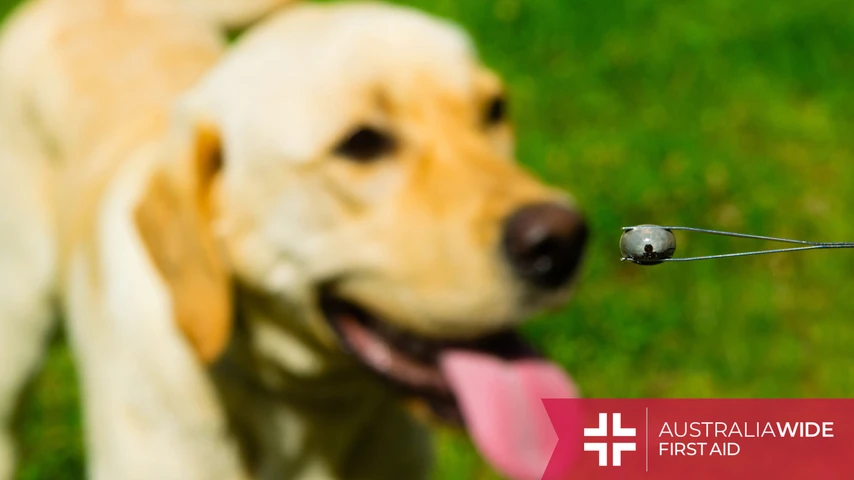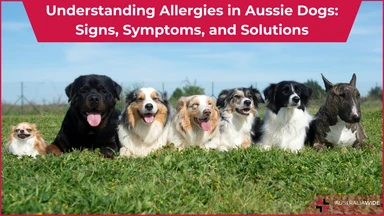Keeping Pets Healthy: Common Diseases


We all know that our fur babies are as much a part of the family as anyone else, and their health is of utmost importance. To help you keep your pets in top-notch shape, we've put together an informative guide about some common diseases that can affect all of our four-legged friends in Australia. We'll discuss the signs and symptoms to watch for, how these diseases progress when to seek veterinary care, and, most importantly, how to protect your pets from these health issues.
Fleas and ticks are common nuisances for Australian pets. These tiny parasites can lead to a range of health problems, from skin irritations to serious diseases. Some of the most dangerous ticks in Australia are the Paralysis Tick and the Brown Dog Tick.
Signs and Symptoms:
Progression:
If left untreated, fleas and ticks can lead to more severe skin infections and transmit diseases, even to humans.
Ticks in particular are of grave concern. If a tick is left unremoved, your pet may start to exhibit symptoms such as a wobbly walk, appetite loss, difficulty breathing, and the inability to stand. These can be considered as medical emergencies.
When to See a Vet:
If your pet is heavily infested or shows signs of severe itching or allergic reactions, consult your vet.
If you suspect an advanced stage of tick illness due to aggressive symptoms such as those above, take your pet to the vet immediately. They may require fluids and medication to help them recover.
Prevention:
Regularly use flea and tick preventatives. Check your pet for ticks after outdoor activities and maintain a clean living environment to prevent a flea outbreak.

Leptospirosis is a bacterial infection that can affect both dogs and cats.
It is considered a zoonotic disease, meaning it can be transmitted from animals to humans.
In Australia, the disease is commonly associated with exposure to contaminated water sources, making it more prevalent in rural areas.
Signs and Symptoms:
The symptoms of Leptospirosis in dogs and cats can vary, making it challenging to diagnose without proper veterinary assessment. Some common signs include:
Progression:
The progression of Leptospirosis can be quick, which can be scary for many pet owners, with severe cases leading to life-threatening complications.
These complications may include:
When to See a Vet:
If you suspect your pet has been in contact with contaminated water sources and shows any symptoms, seek immediate veterinary attention. Early diagnosis and treatment can greatly improve your pet's chances of recovery.
Prevention:
Vaccination is the key to protecting your pet against Leptospirosis. Keep your pet away from stagnant water sources that may be contaminated.
Heartworm disease is a significant concern for pet owners in Australia, especially in areas with a high prevalence of mosquitoes, which play a pivotal role in transmitting the disease.
Heartworm disease affects dogs, but it can also affect cats.
Heartworm disease is caused by the parasitic roundworm called Dirofilaria immitis. These worms primarily infect the heart and lungs of infected pets.
When a mosquito carrying heartworm larvae bites an animal, it can transmit the larvae into the animal's bloodstream.
Signs and Symptoms:
One of the most challenging aspects of heartworm disease is its lack of early symptoms.
As the disease progresses, dogs and, less commonly, cats may exhibit symptoms such as:
Progression:
In severe cases, heartworm disease can lead to heart failure and organ damage, potentially proving fatal.
When to See a Vet:
Early detection is crucial because the disease is easier to manage in its initial stages.
If your dog or cat lives in a region where heartworm is prevalent and displays any of the symptoms mentioned above, it's important to seek immediate veterinary care.
Prevention:
Preventing heartworm disease is far more straightforward and cost-effective than treating an established infection:

Parvovirus, often referred to simply as "Parvo," is a highly contagious and potentially deadly disease that affects dogs, especially puppies.
This nasty bug can be contracted through contact with infected feces and contaminated environments. In fact, in Australia, a dog catches Parvo approximately every 24 minutes.
You can read more about Parvovirus in our article: Canine Parvovirus: Causes, Symptoms, Treatment & Prevention
Signs and Symptoms:
Recognizing the signs and symptoms of Parvo is crucial for early intervention. Keep an eye out for the following:
Progression:
Parvo can progress rapidly, with the disease's severity varying from case to case. In severe instances, it can lead to life-threatening complications, including:
When to See a Vet:
If your dog exhibits any of the symptoms mentioned, don't hesitate! Seek immediate veterinary care. Early intervention can significantly improve your dog's chances of recovery.
Prevention:
The best way to protect your pup is through vaccination. Regularly vaccinate your dog against Parvo to ensure their safety. Avoid taking your unvaccinated puppy to public places until they are fully protected.
As responsible pet owners, it's our duty to keep our furry friends safe and healthy.
By understanding the common diseases that can affect pets in your part of Australia, recognizing the signs and symptoms, knowing when to seek veterinary care, and taking preventive measures, you can ensure your pets lead happy, healthy lives.
So, let's keep our pets' tails wagging, whiskers twitching, and thriving. Our pets bring boundless joy into our lives, and it's our responsibility to make sure their days are filled with health, happiness, and the warmth of our love.
Here's to many more playful moments and unforgettable memories with our beloved furry family members!

April 16, 2024
Like humans, our canine friends are susceptible to allergies, which can significantly affect their quality of life. This article aims to shed light on common allergies in dogs, their signs and symptoms, treatment options, and advice on when to consult a veterinarian.

March 19, 2024
From respiratory distress to changes in droppings and abnormal behaviours, this guide outlines the key indicators of illness that require immediate attention. By understanding these warning signs, bird owners can take proactive steps to ensure their feathered companions receive timely medical treatment, ultimately promoting their health and well-being.

February 12, 2024
In the hustle and bustle of our daily lives, it's easy to overlook that our furry friends may not be leading lives as fulfilled as we'd like. Just like humans, dogs too can suffer from monotony, especially those spending large amounts of time indoors. Recognizing and addressing boredom in our canine companions is crucial for their overall well-being.